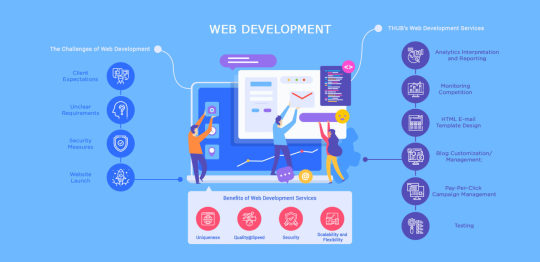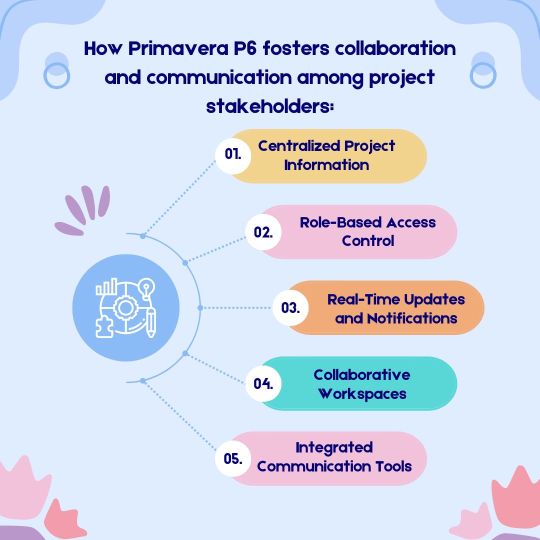#projectplan
Text
Creating a web development project plan:

Creating a Web development project plan is essential for success in web development. By following the step-by-step guide outlined in this article, you’ll be well-equipped to plan, develop, and launch a successful website that achieves your goals and objectives.
#WebDevelopment#ProjectPlanning#WebsiteProject#WebDesign#WebsiteDevelopment#DigitalStrategy#ProjectManagement
4 notes
·
View notes
Text
Calling all MAC users! Explore the top 10 project planning software options for your device. Simplify your planning process, track progress, and achieve project success. Empower your productivity with these powerful tools.
3 notes
·
View notes
Text
SITE PLANNING ENGINEER NEAR ME
Discover expert site study consultancy services at N Engineering. Our team provides comprehensive analysis and strategic planning to ensure your project’s success from the ground up. Trust us for efficient, compliant, and innovative solutions tailored to your needs.

#SitePlanningEngineer#SiteStudyConsultancy#EngineeringServices#ProjectPlanning#CivilEngineering#NEngineering#SITE PLANNING ENGINEER NEAR ME#site study consultancy services
0 notes
Text

Cost Management Strategies for Industrial Scaffolding Projects
Effective cost management for industrial scaffolding projects involves several strategic approaches. Firstly, precise project planning is crucial, ensuring accurate material estimates and labor needs to avoid overspending. Utilizing advanced software for project management can help in tracking expenses and identifying potential cost overruns early.
#CostManagement#IndustrialScaffolding#ProjectPlanning#EfficientSpending#ReusableMaterials#SupplierNegotiation#WorkforceTraining#ExpenseTracking
0 notes
Text
Agile Evolution: Adapting Sprint Management for Changing Needs
In the fast-paced world of project management, the evolution of agile methodologies has become imperative to keep pace with changing needs and dynamic environments. One such evolution is the adaptation of sprint management, a key component of agile frameworks, to suit the ever-changing demands of modern projects. In this blog post, we will explore the concept of agile evolution and dive into how organizations can effectively adapt sprint management to meet their evolving needs.
Understanding Agile Evolution
Agile methodologies originated from the software development industry, emphasizing iterative development, collaboration, and flexibility. Over time, agile principles have transcended their original domain and found application in various industries, including marketing, finance, and manufacturing. This evolution reflects the need for organizations to respond quickly to market changes, customer feedback, and technological advancements.
The Role of Sprint Management
At the heart of agile methodologies lies sprint management, a framework for breaking down projects into manageable chunks called sprints or iterations. Each sprint typically lasts two to four weeks and involves planning, execution, review, and adaptation. Sprint management promotes transparency, collaboration, and continuous improvement, enabling teams to deliver value incrementally and respond to changes effectively.
Challenges in Adapting Sprint Management
While sprint management offers numerous benefits, adapting it to changing needs poses several challenges. These challenges include:
Scope Creep: Changes in project scope during sprints can disrupt timelines and priorities.
Resource Constraints: Limited resources may hinder the ability to adapt quickly to evolving requirements.
Communication Breakdowns: Inadequate communication among team members can lead to misunderstandings and delays.
Resistance to Change: Resistance from team members or stakeholders may impede the adoption of new practices.
Strategies for Adapting Sprint Management
To overcome these challenges and successfully adapt sprint management for changing needs, organizations can implement the following strategies:
Prioritize Flexibility: Embrace change as a core principle of agile methodologies. Encourage teams to remain flexible and responsive to evolving requirements.
Effective Planning: Determine precise objectives, outputs, and standards for evaluation in each sprint.Define clear objectives, deliverables, and success criteria for each sprint.
Regular Communication: Foster open and transparent communication among team members, stakeholders, and customers. Regularly review progress, solicit feedback, and address concerns promptly.
Empowerment and Accountability: Empower team members to take ownership of their work and make decisions autonomously. Establish accountability mechanisms to ensure that commitments are met.
Continuous Improvement: Embrace a culture of continuous improvement by regularly reflecting on processes, identifying areas for enhancement, and implementing changes iteratively.
Conclusion
In conclusion, agile evolution is essential for organizations seeking to thrive in today’s dynamic business landscape. By adapting sprint management for changing needs, organizations can enhance their agility, responsiveness, and ability to deliver value to customers. By prioritizing flexibility, effective planning, communication, empowerment, and continuous improvement, organizations can overcome challenges and unlock the full potential of agile methodologies.
As the pace of change continues to accelerate, embracing agile evolution becomes not just a competitive advantage, but a necessity for survival in the ever-evolving marketplace.
#artificial intelligence#projectmanagement#marketing#SprintManagement#AgileWorkflow#ProjectManagement#Scrum#TeamProductivity#AgileMethodology#ProductDevelopment#TimeManagement#TaskPrioritization#CollaborativeTeams#AgileLeadership#TaskManagement#TeamCoordination#IterativeDevelopment#ContinuousImprovement#AgileProcesses#ProjectPlanning#TeamEmpowerment#SprintPlanning
0 notes
Text

Mastering stakeholder relationships is critical to the success and longevity of any project or organization. Organizations can foster strong, collaborative relationships with stakeholders by building a complete management plan that focuses on communication, engagement, and continual improvement. This not only improves project outcomes but also helps to maintain the organization's performance and reputation over time. In a world where shareholder involvement is on the rise, competent management is not only helpful but also necessary. For more information about Town Planning, visit: https://www.wallplanning.com.au/
0 notes
Text

When it comes to finding the perfect marble, granite, or natural stone for your home, villa, hotel, or project, The Infinity Bhandari Marble Group India stands out as a premier manufacturer, exporter, and supplier. Located in the heart of Rajasthan, Kishangarh, our 100,000 SF factory outlet showroom offers an unparalleled selection of superior quality stone slabs and tiles at wholesale prices. Here's why we are the top choice for all your stone needs.
#MarbleManufacturer#StoneSupplier#MarbleExporter#NaturalStone#Granite#Quartzite#Limestone#Sandstone#MarbleSlabs#MarbleTiles#HomeDecor#InteriorDesign#LuxuryHomes#HotelDesign#ProjectPlanning#WholesaleMarble#ItalianMarble#ImportedMarble#IndianMarble#Countertops#MarbleCollection#BestPrices#CustomerService#BhandariMarble#KishangarhMarble#PremiumQuality#HomeRenovation#DesignInspiration#ArchitectsChoice#BuildersChoice
0 notes
Text
Understanding Topographical Surveys: A Guide by Dolphin Engineer
At Dolphin Engineer, we understand the importance of topographical surveys in infrastructure development. A topographical survey is an essential step in the planning and execution of any construction project. It provides a detailed and accurate representation of the natural and man-made features of the land, which is essential for designing and building safe and functional infrastructure. This also includes everything from hills and valleys to buildings and roads. A topographical survey also called a topo survey for short, uses fancy equipment to measure distances, angles, and elevations (heights) across the land.
What is a Topographic Survey?
Have you ever wondered how engineers and architects plan those amazing buildings and winding roads? A topographic survey which is also known as a contour survey or land survey shows the exact location of both human-made and natural features on a parcel of land. it focuses on both horizontal and vertical aspects, providing information about the property. The reason behind a topographic survey is to define changes in elevation on a parcel of land, which is essential for planning land use.
Why Do You Need a Topographic Survey?
When buying, developing, or evaluating land, a topographic survey is the first step. A topographic survey is important in many cases, as it helps identify potential issues with the land. By identifying issues early on, you can find simple solutions, such as relocating building locations, adding proper drainage, or levelling the ground.
The Importance and Process of Topographical Surveys
At Dolphon Engineer we are an expert team of engineers who use to plan and design buildings, roads, and other structures. Developers need accurate land details to plan new subdivisions or commercial properties. Environmental scientists rely on these surveys to understand the landscape, and they also help resolve property disputes and define land boundaries. To conduct a topographical survey, surveyors gather existing maps and records, visit the site with tools like GPS and drones, process the data with computer software, and produce a detailed map or report showing the land’s features.

How is a Topographical Survey Done?
At Dolphin Engineer, we follow a systematic process to ensure accurate and reliable results. First, we do an Initial consultation here we connect with you to understand your needs and the specifics of the projects. Our team visits the site to gather data using advanced tools like GPS, drones, and total stations. Then we process the collected data to create detailed maps and models. after analysing provide you with the reports and visualizations, with 2D maps and 3D models.
Conclusion
At Dolphin Engineer, we understand the importance of topographical surveys in infrastructure development. Our team of experienced surveyors and engineers use the latest technologies and methods to provide accurate and reliable topographical surveys. Whether you're planning a new construction project or need to update an existing infrastructure, our topographical survey services can help you achieve your goals.
#TopographicalSurvey#LandSurveying#InfrastructureDevelopment#ConstructionPlanning#Engineering#LandDevelopment#GPS#Drones#SurveyingTechnology#SitePlanning#EnvironmentalScience#PropertyBoundaries#TopoSurvey#CivilEngineering#AccurateData#ProjectPlanning#LandEvaluation#SurveyingExperts#DolphinEngineer#3DMapping#2DMapping
1 note
·
View note
Text
THE ULTIMATE GUIDE TO UNDERSTANDING SOFTWARE DEVELOPMENT COSTS
In the dynamic realm of technology, grasping software development costs is pivotal for business success. Our guide offers a comprehensive exploration, covering cost types, management strategies, and future trends, empowering businesses to make informed decisions and navigate the intricacies of project planning effectively. Discover the significance of understanding software development costs, explore different cost types, and learn about effective strategies for cost management. Dive into our detailed insights and stay ahead in the evolving landscape of software development.
#SoftwareDevelopment#CostManagement#ProjectPlanning#Budgeting#TechCosts#BusinessStrategy#ProjectManagement#AgileDevelopment#TechTrends#FutureOfTech#SoftwareCosts#DevOps#ITBudget#DigitalTransformation#SoftwareEngineering
0 notes
Text

Looking for a Primavera training institute in Noida that stands out? Look no further than APTRON Solutions. We offer comprehensive and industry-aligned Primavera courses that can give you the edge in project management. At APTRON Solutions, our Primavera training program is designed to equip you with practical skills and knowledge that are in demand in today's job market. Whether you're a beginner looking to start a career in project management or a seasoned professional aiming to enhance your skill set, our courses cater to all levels of expertise.
#PrimaveraTraining#ProjectManagement#NoidaTraining#APTRONSolutions#ProjectPlanning#ResourceManagement#CareerDevelopment#LearnPrimavera#ProfessionalTraining#IndustrySkills
0 notes
Text

#OraclePrimavera#PrimaveraP6#ProjectManagement#ConstructionManagement#ProjectPlanning#ScheduleManagement
0 notes
Text
Simplify Your Tasks: Vabro's Smart Project Management Software
Project management software has become an indispensable tool for businesses of all sizes, offering a comprehensive solution to streamline project planning, collaboration, and monitoring. In today's fast-paced business environment, efficient project management is essential for achieving success and staying competitive.
What is Project Management Software?
Project management software is a digital platform designed to help teams plan, execute, and manage projects from start to finish. It offers a centralized hub for organizing tasks, communicating with team members, tracking progress, and generating reports.
Importance of Project Management Software
Effective project management software plays a crucial role in improving productivity, enhancing communication, and ensuring project deadlines are met. By providing tools and features tailored to the needs of project managers and team members, it helps streamline workflow and optimize resource allocation.
Overview of Vabro
Vabro is a leading project management software that empowers teams to collaborate more efficiently, manage tasks effectively, and deliver projects on time and within budget. With its user-friendly interface and robust features, Vabro is designed to meet the diverse needs of modern businesses.
Introduction to Vabro
Vabro offers a comprehensive suite of tools for project planning, task management, team collaboration, and reporting. Its intuitive interface makes it easy for users to navigate and access the information they need to stay productive.
Key Features of Vabro
Task Management: Vabro allows users to create tasks, assign them to team members, set deadlines, and track progress in real-time.
Collaboration Tools: With features like file sharing, messaging, and activity feeds, Vabro facilitates seamless communication and collaboration among team members.
Time Tracking: Vabro enables users to track time spent on tasks, projects, and clients, helping to improve productivity and billing accuracy.
Benefits of Using Vabro
Vabro offers a wide range of benefits for businesses looking to streamline their project management processes and improve overall efficiency.
Streamlined Project Planning
Vabro's intuitive project planning tools allow users to create project timelines, set milestones, and allocate resources with ease. This helps ensure that projects stay on track and are completed on time.
Enhanced Collaboration
By providing a centralized platform for communication and file sharing, Vabro helps teams collaborate more effectively, regardless of their location or time zone. This fosters a culture of transparency and accountability, leading to better outcomes.
Real-Time Monitoring and Reporting
With Vabro's real-time monitoring and reporting features, project managers can easily track progress, identify bottlenecks, and make data-driven decisions to keep projects moving forward. This visibility into project status helps teams stay aligned and focused on their goals.
How Vabro Improves Efficiency
Vabro offers a range of features designed to streamline project management processes and improve overall efficiency.
Task Management
Vabro's task management tools allow users to create, assign, and prioritize tasks, ensuring that everyone knows what needs to be done and when. This helps eliminate confusion and duplication of effort, leading to greater productivity.
Resource Allocation
With Vabro's resource allocation features, project managers can easily assign resources to tasks and projects based on availability and skill level. This ensures that the right people are working on the right tasks at the right time, maximizing efficiency and minimizing downtime.
Time Tracking
Vabro's time tracking capabilities allow users to monitor how much time is being spent on each task and project. This helps identify inefficiencies and areas for improvement, enabling teams to optimize their workflow and deliver projects more efficiently.
Case Studies
Real-world examples illustrate how Vabro has helped businesses improve their project management processes and achieve their goals.
Company A: Increased Productivity with Vabro
Company A implemented Vabro to streamline their project management processes and improve team collaboration. By centralizing project information and communication, they were able to reduce project delays and increase productivity by 30%.
Company B: Streamlined Communication and Workflow
Company B struggled with siloed communication and inefficient workflow processes. After adopting Vabro, they experienced a significant improvement in communication and collaboration among team members, leading to faster project delivery and higher client satisfaction.
Comparison with Other Project Management Software
While there are many project management software options available, Vabro stands out for its user-friendly interface, robust features, and affordable pricing plans.
Pricing Plans and Packages
Vabro offers flexible pricing plans to suit the needs and budget of businesses of all sizes.
Basic Plan
The Basic Plan includes essential features for project management, collaboration, and reporting, making it ideal for small teams and startups.
Premium Plan
The Premium Plan offers additional features such as advanced reporting, resource management, and integrations with other tools and platforms, making it suitable for growing businesses with more complex project management needs.
Enterprise Plan
The Enterprise Plan is fully customizable and tailored to the specific requirements of large organizations with multiple teams and projects. It includes premium support, dedicated account management, and priority access to new features and updates.
Customer Testimonials
“Very informative and knowledgeable tool for adding scrum to team” - Hithaishi IBM, United States
“This is great tool to learn and implement Scrum” - Ravinder Kaur, Insight Global, United States
Conclusion
Vabro is a comprehensive project management software that empowers teams to collaborate more efficiently, manage tasks effectively, and deliver projects on time and within budget. With its user-friendly interface, robust features, and affordable pricing plans, Vabro is the ideal solution for businesses looking to streamline their project management processes and achieve greater success.
#ProjectManagement#Vabro#Collaboration#Productivity#Efficiency#BusinessTools#ProjectPlanning#Teamwork#Workflow#ProjectSuccess
0 notes
Text

Elevate Your Writing Experience with the Exquisite "Notebook by Meera Mandakini"
In the world of note-taking essentials, there's a gem that stands out for its elegance, versatility, and quality—introducing the "Notebook by Meera Mandakini." This meticulously crafted notebook is not just a place to jot down thoughts; it's a canvas for your creativity, a sanctuary for your ideas, and a reliable companion for your everyday adventures.
Crafted for Excellence
Measuring 8.5 x 11 inches, this notebook provides ample space for your writing, doodling, or sketching needs. With 120 pages of premium quality lined paper, each stroke of your pen feels like a breeze, effortlessly flowing from your mind onto the page. Whether you're in a boardroom meeting, a classroom lecture, or simply lounging at home, this notebook adapts seamlessly to your environment.
Style Meets Substance
The beauty of the "Notebook by Meera Mandakini" lies not only in its functionality but also in its aesthetics. Its beautiful cover is a testament to Meera Mandakini's commitment to blending style with substance. Adorned with intricate designs and vibrant colors, it's bound to catch the eye and spark inspiration wherever you go.
Versatility Redefined
Gone are the days of juggling multiple notebooks for different purposes. This multipurpose notebook is designed to cater to all your needs, whether it's for work, school, journaling, or planning. Its college-ruled pages offer a structured layout, perfect for organizing your thoughts, jotting down meeting minutes, or outlining your next big project.
The Perfect Companion
But what truly sets the "Notebook by Meera Mandakini" apart is its ability to inspire. It's more than just a tool; it's a catalyst for creativity, innovation, and personal growth. Whether you're an aspiring writer, a diligent student, or a seasoned professional, this notebook empowers you to unleash your full potential and bring your ideas to life.
Experience Excellence Today
Join the countless individuals who have already elevated their writing experience with the "Notebook by Meera Mandakini." Embrace quality, style, and versatility in every stroke of your pen. Whether you're embarking on a new project, capturing fleeting thoughts, or simply expressing yourself, let this exquisite notebook be your trusted companion on your journey.
Upgrade your note-taking experience today with the "Notebook by Meera Mandakini"—where beauty meets functionality, and inspiration knows no bounds.
#MeeraMandakini#Notebook#WritingExperience#Craftsmanship#Style#Versatility#Creativity#Innovation#Stationery#Organization#Inspiration#Quality#Artistry#WriterLife#StudentLife#WorkLife#Journaling#ProjectPlanning#Elegance#NoteTaking#CreativeWriting#amazon#bestsellerbook
0 notes
Text

With the Microsoft Project 2019 Certification, find the doorway to career success. This eye-catching picture displays the Microsoft Project 2019 dynamic interface surrounded by icons for skill development, career advancement, and project management. The power of certification can help you reach your full potential and advance in your career.
#MicrosoftProject2019#ProjectManagement#Certification#CareerDevelopment#MicrosoftCertification#ProfessionalSkills#ProductivityTools#ProjectPlanning#ResourceManagement#TechnologySkills
0 notes
Text
Agile Methodology Sprint Planning: A Detail Structure and Planning
Agile methodology has revolutionized the way software development projects are executed, emphasizing flexibility, collaboration, and responsiveness to change. At the heart of Agile lies Sprint Planning, a crucial phase where teams lay the groundwork for the upcoming sprint cycle. Let's go to the detailed application of Agile Methodology Sprint Planning and uncover its significance in delivering successful projects.
Introduction to Agile Methodology
Agile methodology is an iterative approach to software development that prioritizes customer satisfaction, adaptive planning, and continuous improvement. Unlike traditional waterfall methods, Agile encourages incremental development, allowing teams to respond to feedback and adapt to changing requirements throughout the project lifecycle.
Understanding Sprint Planning
Definition of Sprint Planning
Sprint Planning is a collaborative event in Agile methodology where the Scrum team plans the work to be done during the upcoming sprint. It involves determining which items from the product backlog will be included in the sprint, defining the sprint goal, and estimating the effort required to complete the selected work.
Importance of Sprint Planning in Agile Methodology
Sprint Planning sets the tone for the entire sprint cycle, providing clarity and direction to the team. By establishing a clear sprint goal and selecting the most valuable items from the backlog, This technology ensures that the team remains focused on delivering tangible results within a fixed timeframe.
Key Components of Sprint Planning
Sprint Goal
The Sprint Goal defines the objective or outcome that the team aims to achieve by the end of the sprint. It serves as a guiding principle for the team, helping them prioritize tasks and make decisions that align with the overall project vision.
Backlog Refinement
Before Sprint Planning begins, the Product Owner ensures that the product backlog is refined and prioritized. This involves breaking down user stories into smaller, actionable tasks, estimating their effort, and clarifying any ambiguities or dependencies.
Sprint Backlog
The Sprint Backlog is a subset of the product backlog that contains the list of tasks committed to by the team for the upcoming sprint. It includes user stories, bugs, and technical debt items that the team agrees to complete within the sprint timeframe.
Sprint Planning Meeting
The Sprint Planning Meeting is a time-boxed event where the entire Scrum team collaborates to plan the work for the upcoming sprint. During the meeting, the team reviews the product backlog, selects items for the sprint backlog, and estimates the effort required for each task.
Roles and Responsibilities
Product Owner
The Product Owner is responsible for prioritizing the product backlog, clarifying requirements, and ensuring that the team delivers value to the customer. During Sprint Planning, the Product Owner provides guidance on the sprint goal and helps the team understand the business objectives.
Scrum Master
The Scrum Master assists the Sprint Planning meeting, keeping it focused and productive. They help the team adhere to Scrum principles and remove any impediments that may hinder progress during the sprint.
Development Team
The Development Team consists of cross-functional members who are responsible for delivering the work committed to in the sprint backlog. During Sprint Planning, they collaborate to estimate the effort required for each task and determine how they will accomplish the sprint goal.
Step-by-Step Guide to Sprint Planning
Setting the Sprint Goal
The Product Owner articulates the sprint goal based on the highest priority items in the product backlog. The sprint goal should be specific, achievable, and aligned with the overall project objectives.
Backlog Refinement
The Product Owner and Development Team collaborate to refine the product backlog, breaking down user stories into smaller tasks and estimating their effort. This ensures that the backlog items are well-defined and ready for inclusion in the sprint.
Estimating Effort
The Development Team estimates the effort required to complete each task in the sprint backlog. This can be done using techniques such as story points, timeboxing, or planning poker, depending on the team's preference.
Committing to Sprint Backlog
Based on the sprint goal and the team's capacity, the Development Team commits to a set of tasks to be completed within the sprint timeframe. The sprint backlog is finalized, and the team is ready to begin work on the selected items.
Best Practices for Effective Sprint Planning
Prioritize User Stories
Focus on delivering value to the customer by prioritizing user stories that address their most pressing needs. This ensures that the team is working on the most important tasks first, maximizing the impact of each sprint.
Keep the Sprint Goal Clear and Achievable
Ensure that the sprint goal is well-defined and achievable within the sprint timeframe. Avoid overcommitting or setting unrealistic expectations that may lead to frustration and burnout.
Involve the Entire Team
Sprint planning is a group endeavor that includes the whole Scrum team. Encourage open communication and active participation from all team members to ensure that everyone has a clear understanding of the sprint goal and their role in achieving it.
Review and Adapt
Regularly review the progress of the sprint and adapt as needed to stay on track. Keep communication channels open and be prepared to adjust priorities or reallocate resources if unexpected challenges arise.
Challenges in Sprint Planning
Lack of Clarity in Requirements
Unclear or ambiguous requirements can lead to confusion and delays during Sprint Planning. It's important to clarify any ambiguities upfront and involve stakeholders in the refinement process to ensure that everyone is on the same page.
Time Constraints
Sprint Planning meetings are time-boxed to ensure that they stay focused and productive. However, tight deadlines can sometimes limit the team's ability to thoroughly discuss and plan the work, leading to rushed decisions or overlooked details.
Overcommitment
Teams may sometimes overcommit to a sprint, taking on more work than they can realistically complete within the timeframe. This can result in anxiety, exhaustion, and a lower quality of work.It's essential to set realistic goals and prioritize tasks based on their value and complexity.
Benefits of Agile Methodology Sprint Planning
Improved Visibility and Transparency
Sprint Planning provides stakeholders with a clear understanding of what will be delivered in each sprint and when it will be completed. This transparency fosters trust and collaboration between the team and stakeholders, leading to more successful outcomes.
Enhanced Collaboration and Communication
Sprint Planning encourages open communication and collaboration among team members, fostering a culture of shared responsibility and accountability. By involving stakeholders in the planning process, teams can ensure that everyone is aligned and working towards the same goals.
Faster Time-to-Market
By breaking down work into small, manageable chunks and delivering value incrementally, Agile Methodology Sprint Planning enables teams to bring products to market faster. This iterative approach allows for rapid feedback and course correction, reducing the time it takes to deliver value to customers.
Conclusion
Agile Methodology Sprint Planning is a foundational practice that sets the stage for successful software development projects. By establishing clear goals, prioritizing tasks, and fostering collaboration, Sprint Planning enables teams to deliver high-quality products that meet customer needs and drive business value. By embracing Agile principles and incorporating Sprint Planning into their workflow, organizations can adapt to change more effectively, respond to customer feedback more rapidly, and ultimately, achieve greater success in today's fast-paced digital landscape.
#AgileMethodology#AgileFramework#ScrumMaster#ProjectPlanning#ProductivityTips#TeamManagement#LeadershipSkills#DigitalTransformation#BusinessStrategy#WorkflowOptimization
0 notes